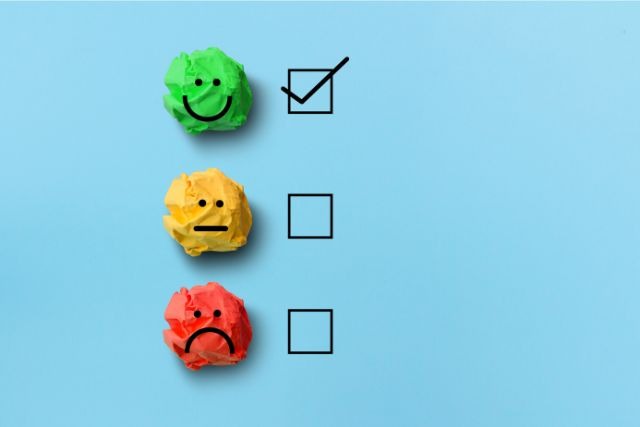
How can you make your business even more successful? By gaining insight into customer satisfaction, of course! Satisfied customers are more loyal, make repeated purchases, and engage in word-of-mouth marketing in their own network. But how do you get to know more about customer satisfaction? You do this by measuring customer satisfaction! In this blog, we’ll take a closer look at why measuring customer satisfaction is so important and how you can do it in an effective way.
Why measure customer satisfaction?
Customer satisfaction measurement ensures a company can understand customer needs, expectations, and perceptions. By measuring customer satisfaction, businesses can gather valuable feedback. This feedback ensures that problems or bottlenecks in the products, services, and processes can be identified and addressed. This process not only helps in retaining existing customers and strengthening their loyalty, but also in gaining a competitive advantage.
How to measure customer satisfaction?
Customer satisfaction can be measured through a variety of methods, such as surveys, feedback forms, online reviews, and social media monitoring. These methods allow companies to ask targeted questions about different aspects of the customer experience. This includes product quality, customer service and delivery speed. Measuring customer satisfaction should be done regularly. To optimize customer satisfaction, regular measurements are essential for tracking trends, identifying changes, and gaining insights. Analyzing the collected data and acting on these insights are crucial steps for achieving meaningful improvements.
What is a KPI for customer satisfaction?
A KPI, or Key Performance Indicator, is a measurable and quantifiable indicator used to evaluate a company’s performance. An example of a KPI is measuring customer satisfaction. There are several ways you can measure customer satisfaction. Below we will briefly explain some of them.
Net Promoter Score
The Net Promoter Score, abbreviated as NPS, is a measurement tool used to measure a company’s customer loyalty and satisfaction. A positive NPS indicates that there are more customers who would recommend the company over not. This is considered a sign of strong customer loyalty and positive customer satisfaction. An NPS of +50 or higher is often considered excellent. In addition, a negative NPS indicates that there is work to be done to improve customer satisfaction.
Customer Satisfaction Score
The Customer Satisfaction Score surveys specific touchpoints, allowing for targeted questions and better insights. However, it offers limited insight into overall satisfaction.

Brand attributes
Another way to measure customer satisfaction is to understand brand attributes. By asking questions about a customer’s brand attributes, you can find out if this matches the image you have of the company. When customers’ perception of brand attributes matches, customers are more likely to stay satisfied and come back.
Overall satisfaction
As a company, you would naturally want all customers to be satisfied, but this is not always easy. To measure customer satisfaction, it can be an opportunity to map out the overall customer satisfaction. If overall satisfaction is good, you know you’re on the right track. But of course, this doesn’t say much about the satisfaction of specific moments or things. Measuring overall satisfaction can be done with scores or grades.
Is the goal of your customer satisfaction survey to gain insights into customer loyalty? Read more about loyalty marketing in this blog!
What questions should you ask in a customer satisfaction survey?
Would you like to measure customer satisfaction? Then it is important that you ask the right questions. After all, by asking the right questions, you will get answers to things you want to find out. Below we show a number of sample questions for a customer satisfaction survey.
- How satisfied are you with our products/services in general?
- Would you recommend us to others?
- How would you rate the quality of our products/services?
- To what extent do our products/services meet your expectations?
- How satisfied are you with the customer service you’ve received?
- How quickly and efficiently were your questions/complaints resolved?
- How do you value the price in relation to what you receive?
- Do you think our products/services are worth the money?
- Are you experiencing any problems navigating or using our products/services?
- Do you plan to do business with us again in the future?
- Would you consider trying other products/services from us?
In addition to the questions above, you could also ask for demographic information, such as age, gender, location, or occupation. This allows you to gain better insights into specific target groups and respond better to them or make adjustments.
How often should you measure customer satisfaction?
How often you should measure customer satisfaction can vary depending on company characteristics and goals. Many companies use continuous monitoring for real-time insights, while periodic measurements, such as monthly or yearly, can reveal long-term trends. Specific events or campaigns may also require targeted measurement. Striking a balance between having enough data and avoiding survey fatigue is important. This way, you will gain insights in a structured way that will benefit customer satisfaction and business performance.





